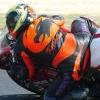
Sign in to follow this
Followers
0

The workings of the terrain engine and how textures are loaded
By
markturner, in FSX | FSX-SE Scenery Design Forum - How To


By
markturner, in FSX | FSX-SE Scenery Design Forum - How To